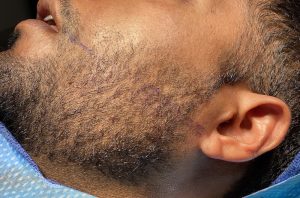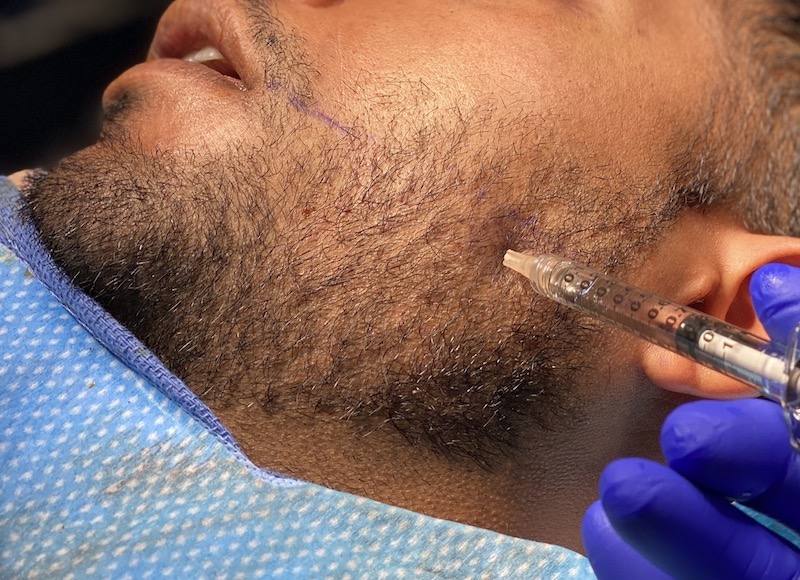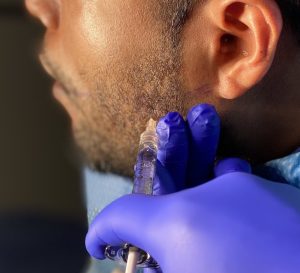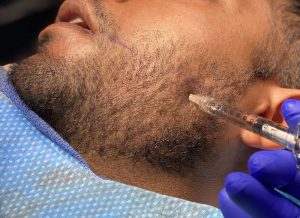The masseter muscles of the lower jaw can be large either by natural development or by over use. The most common over use cause is clenching or bruxism. Regardless of its etiology successful muscle reduction, although not usually permanent, is through injections of neuromuscular deactivating agents. (e.g., Botox, Dysport, Xeomin) Direct injection into the masseter muscle will cause it to shrink over the following several weeks by blocking the release of the neurotransmitter acetylcholine across the neuromuscular synapse.
While Botox injections are widely used for the muscles of facial expression over the past three decades, techniques to inject the masticatory muscles are less well known. The masseter muscle is a large quadrangular muscle, the strongest muscle int the body by weight, that originates along the zygomatic arch and extends downward to attach to the bony jaw angles. Based on this attachment relationship as it contracts it elevates the jaw closed as well as it is the primary muscle involved in chewing. Because of its primary location of action the thickest part of the muscle lies over the middle part of the jaw angle. (ramus) Not at the edges of its attachment inferior and posterior border of the jaw angle but higher.

While it is important to inject into the bulge of muscle that protrudes when biting down, it is also critical to stay south of the facial equator line. Using a long 1 1/2” 30 gauge needle it is passed through the skin down to the jaw angle bone. Once hitting the one the needle is retracted and then the muscle is injected. This technique assures that the actual muscle is injected. Often this prominent part of the muscle will feel gritty and vert fibrous as the needle passes through it.
When a patient comes to me and tells me that their prior masseter muscle injections didn’t work, most of the time this tells me that their injector was too superficial and never actually entered the muscle. A typical 1/2inch 30 gauge needle can not reach the muscle. It takes at least a 1” long needle and more ideally a 1 1/2” needle.
Dr. Barry Eppley
Indianapolis, Indiana





